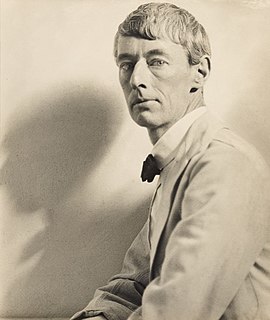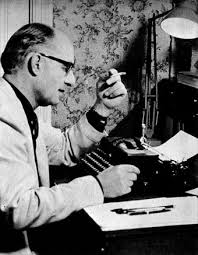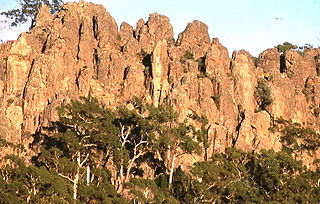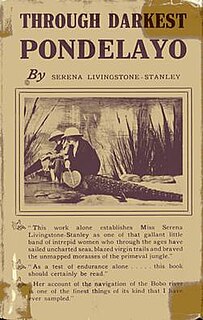
Dame Joan Henrietta Collins is an English actress, author and columnist. Collins is the recipient of several accolades, including a Golden Globe Award, a People's Choice Award, two Soap Opera Digest Awards and a Primetime Emmy Award nomination. In 1983, she was awarded a star on the Hollywood Walk of Fame. She has been recognised for her philanthropy, particularly her advocacy towards causes relating to children, which has earned her many honours. In 2015, she was made a Dame by Queen Elizabeth II for her charitable services.

Picnic at Hanging Rock is an Australian historical fiction novel by Joan Lindsay. The novel, set in 1900, is about a group of female students at an Australian girls' boarding school who vanish at Hanging Rock while on a Valentine's Day picnic, and the effects the disappearances have on the school and local community. The novel was first published in 1967 in Australia by Cheshire Publishing and was reprinted by Penguin in 1975. It is widely considered by critics to be one of the greatest Australian novels. In 2022, it was included on the "Big Jubilee Read" list of 70 books by Commonwealth authors, selected to celebrate the Platinum Jubilee of Elizabeth II.

Joan à Beckett Lindsay, also known as Lady Lindsay, was an Australian novelist, playwright, essayist, and visual artist. Trained in her youth as a painter, Lindsay published her first literary work in 1936 at age forty under a pseudonym, a satirical novel titled Through Darkest Pondelayo. Her second novel, Time Without Clocks, was published nearly thirty years later, and was a semi-autobiographical account of the early years of her marriage to artist Daryl Lindsay.
Ellery Queen is a pseudonym created in 1929 by American crime fiction writers Frederic Dannay and Manfred Bennington Lee and the name of their main fictional character, a mystery writer in New York City who helps his police inspector father solve baffling murders. Dannay and Lee wrote most of the more than thirty novels and several short story collections in which Ellery Queen appeared as a character, and their books were among the most popular of American mysteries published between 1929 and 1971. In addition to the fiction featuring their eponymous brilliant amateur detective, the two men acted as editors: as Ellery Queen they edited more than thirty anthologies of crime fiction and true crime, and Dannay founded and for many decades edited Ellery Queen's Mystery Magazine, which has been published continuously from 1941 to the present. From 1961, Dannay and Lee also commissioned other authors to write crime thrillers using the Ellery Queen nom de plume, but not featuring Ellery Queen as a character; several juvenile novels were credited to Ellery Queen, Jr. Finally, the prolific duo wrote four mysteries under the pseudonym Barnaby Ross.

Joan Delano Aiken was an English writer specialising in supernatural fiction and children's alternative history novels. In 1999 she was awarded an MBE for her services to children's literature. For The Whispering Mountain, published by Jonathan Cape in 1968, she won the Guardian Children's Fiction Prize, a book award judged by a panel of British children's writers, and she was a commended runner-up for the Carnegie Medal from the Library Association, recognising the year's best children's book by a British writer. She won an Edgar Allan Poe Award (1972) for Night Fall.

Norman Alfred William Lindsay was an Australian artist, etcher, sculptor, writer, art critic, novelist, cartoonist and amateur boxer. One of the most prolific and popular Australian artists of his generation, Lindsay attracted both acclaim and controversy for his works, many of which infused the Australian landscape with erotic pagan elements and were deemed by his critics to be "anti-Christian, anti-social and degenerate". A vocal nationalist, he became a regular artist for The Bulletin at the height of its cultural influence, and advanced staunchly anti-modernist views as a leading writer on Australian art. When friend and literary critic Bertram Stevens argued that children like to read about fairies rather than food, Lindsay wrote and illustrated The Magic Pudding (1918), now considered a classic work of Australian children's literature.

Jacqueline Jill Collins was an English romance novelist and actress. She moved to Los Angeles in 1985 and spent most of her career there. She wrote 32 novels, all of which appeared on The New York Times bestsellers list. Her books have sold more than 500 million copies and have been translated into 40 languages. Eight of her novels have been adapted for the screen, either as films or television miniseries. She was the younger sister of Dame Joan Collins.

Henry Treece was a British poet and writer who also worked as a teacher and editor. He wrote a range of works but is mostly remembered as a writer of children's historical novels.
Sight and Sound is a British monthly film magazine published by the British Film Institute (BFI). It conducts the well-known, once-a-decade Sight and Sound Poll of the Greatest Films of All Time, ongoing since 1952.

David Lindsay was a Scottish author best remembered for the philosophical science fiction novel A Voyage to Arcturus (1920).

Jack Lindsay was an Australian-born writer, who from 1926 lived in the United Kingdom, initially in Essex. He was born in Melbourne, but spent his formative years in Brisbane. He was the eldest son of Norman Lindsay and brother of author Philip Lindsay.

Hanging Rock is a distinctive geological formation in central Victoria, Australia. A former volcano, it lies 718m above sea level on the plain between the two small townships of Newham and Hesket, approximately 70 km north-west of Melbourne and a few kilometres north of Mount Macedon.

Night of the Eagle is a 1962 British horror film directed by Sidney Hayers. The script by Charles Beaumont, Richard Matheson and George Baxt was based upon the 1943 Fritz Leiber novel Conjure Wife. The film was retitled Burn, Witch, Burn! for the US release.
Joan Margaret Fleming was a British writer of crime and thriller novels. Her novel The Deeds of Dr Deadcert was made into the film Rx Murder (1958), and she won the Gold Dagger award twice, for When I Grow Rich (1962) and Young Man I Think You're Dying (1970).
Joan Margaret Phipson AM (1912–2003) was an Australian children's writer. She lived on a farm in the Central Tablelands of New South Wales and many of her books evoke the stress and satisfaction of living in the Australian countryside, floods, bushfires, drought and all. Two of her novels, Good Luck to the Rider and The Family Conspiracy, won the Australian Children's Book of the Year Award.
Roberta Leigh was an assumed name for Rita Lewin who was a British author, artist, composer and television producer. She wrote romance fiction and children's stories under the pseudonyms Roberta Leigh, Rachel Lindsay, Janey Scott and Rozella Lake.

Carlton Lindsay Barrett, also known as Eseoghene, is a Jamaican-born poet, novelist, essayist, playwright, journalist and photographer, whose work has interacted with the Caribbean Artists Movement in the UK, the Black Arts Movement in the US, and pan-Africanism in general. Leaving Jamaica in the early 1960s, he moved to Britain, where he freelanced as a broadcaster and journalist, also travelling and living elsewhere in Europe, before deciding to relocate to West Africa. Since the latter 1960s he has been based mainly in Nigeria, of which country he became a citizen in the mid-1980s, while continuing his connection to cultural ventures in the UK and US.

Through Darkest Pondelayo: An account of the adventures of two English ladies on a cannibal island is a 1936 Australian satirical novel by Joan Lindsay, published under the pseudonym Serena Livingstone-Stanley. The book, which was Lindsay's first-published work, was based on her time spent traveling in Europe, and functions as a parody of English tourists abroad. It is structured in the format of a travel book through a series of first-person letters edited together to form a metafictional narrative.

When Marnie Was There is a novel by British author Joan G. Robinson, first published in 1967 by Collins. The story follows Anna, a young girl who temporarily moves to Norfolk to heal after becoming ill. There she meets a mysterious and headstrong girl named Marnie who lives in a house overlooking the marshes. They develop a secretive relationship they come to cherish. The novel explores themes of alienation, loneliness, and forgiveness in childhood. It received highly positive reviews, praised for its intensity of natural imagery, balance of humour with difficult themes, and emotional weight. The story was adapted to television in 1971 and radio in 2006. In 2014, it was adapted by Studio Ghibli as an animated film of the same name.
Constance Lindsay Taylor was a British writer, playwright and screenwriter who wrote under the pseudonym Guy Cullingford. Her novels and short stories were written in the style of Golden Age detective fiction.














